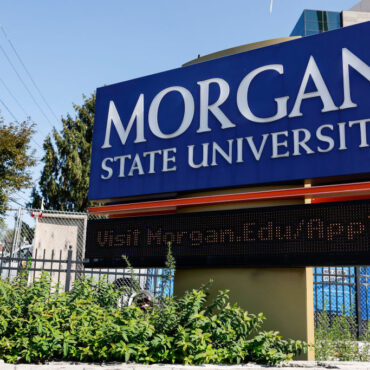-
 play_arrow
play_arrow
Fresh 106 Fresh 106
-
 play_arrow
play_arrow
London Calling Podcast Yana Bolder
Another Historic September 11 In America. The One Where The Terrorists Lost.

Harriet Tubman, far left, with a family she liberated from slavery Source: Bettmann / Getty
As is likely was for most people who lived in the U.S.and were probably at least 10 on September 11, 2001, I know exactly where I was, what I did, how I learned about the planes crashing into the World Trade Center’s North and South buildings, the Pentagon and a field in Shanksville, Pennsylvania.
Which brings us to September 11 and Lancaster County, Pennsylvania–but in 1851. Then, like now, white supremacy was at the core of America’s politics.
Marcy Borders covered in debris, seeking refuge in another building immediately after one of the World Trade Center towers collapsed in New York. STAN HONDA/AFP/Getty Images
The Dividing Line
Lancaster is the first county directly north of what was then the Mason-Dixon Line, the border that separated slaveholding states from non-slaveholding states. A year before the events that took place in the Lancaster County town of Christiana and roughly 100 miles away, in Washington D.C., Congress passed the Fugitive Slave Act of 1850. It made it legal for slaveholders–whom are intermittently and accurately referred to as terrorists here–to enter a non-slaveholding state, hunt down and re-kidnap anyone they could show had once been “their property.”
It was particularly an issue between slaveholding Maryland and non-slaveholding Pennsylvania, a state in which the Underground Railroad had at least two small branches, and a community of Quakers, who by that point had become abolitionists. There were any number of confrontations between escaped slaves and their white allies and slaveholders, but the uprising on September 11,1851, in Christiana, Pennsylvania was considered the first of its kind.
Things didn’t go as planned.
September 11, 1851
Confederate soldiers encounter Black Union soldiers Source: Fine Art / Getty
Eliza Parker saw the approaching white mob and set off an alarm. Neighbors, Black and white, came running. By the end of the confrontation on September 11, Gorsuch was dead and the Marshals had retreated.
By the time the Marshals returned to the Parker home with three detachments of the Marines in tow, William and Elizabeth Parker were in the wind and more than halfway to Canada, assisted by other abolitionists including Frederick Douglass. They lived out their lives in freedom.
But in the States, Marshals did capture 38 other men, including four white Quakers. They were charged with treason, which carried–and still carries–the death penalty. That didn’t go as planned either.
Never Forget
The accused were defended by white abolitionist and Congressman Thaddeus Stevens. who would come to be known as one of the most “militant” of the Radical Republicans—and the legislator who fought for 40 acres and a mule after the war ended. But the first man called to trial was white, a Quaker named Castner Hanway whom prosecutors claimed lead the revolt.
They’d built the strongest case they had against him. But it wasn’t strong enough. Hanway was acquitted. And since they couldn’t get a guilty verdict with him, prosecutors knew they most certainly could not with the other 37 people who had been indicted. The cases were all dropped. Despite a dead white man–even one viewed as terrorist by people in Christiana–no one, not even one Black person was ever found guilty.
What followed was a period of bold uprisings throughout the 1850s, which led to the Civil War and the end of slavery, which was not the original goal of the conflict. It became one when the Union Army realized that to win, it needed the 200,000 Black people who would swell its military ranks, and all the tens of thousands of other Black people still trapped on plantations, but who essentially, went on strike, as W.E.B. DuBois argued.
The Confederacy was out-staffed, outwitted, out-gunned and outmaneuvered, something history records as beginning on another September 11 that should neither be ever forgotten.
The post Another Historic September 11 In America. The One Where The Terrorists Lost. appeared first on NewsOne.
The post Another Historic September 11 In America. The One Where The Terrorists Lost. appeared first on Black America Web.
, The uprising by former slaves on September 11,1851, in Christiana, Pennsylvania was considered the first of its kind.
The post Another Historic September 11 In America. The One Where The Terrorists Lost. appeared first on NewsOne.
The post Another Historic September 11 In America. The One Where The Terrorists Lost. appeared first on Black America Web., , Read More, Civil Rights & Social Justice, DL Hughley Show Trending, DLHS App, Opinion, The DL Hughley Show, News Archives – Black America Web, [#item_full_content].
Similar posts
Featured post

Latest posts

Morgan State University Becomes Third Largest HBCU In The Nation

The New Jordan “Jumpman Jack” Travis Scott Kicks Release

10 Gift Ideas For The Intellectual Black Man In Your Life

Black Men Incarcerated In Virginia’s Red Onion State Prison Reportedly Set Themselves On Fire Amid Documented Abuse Behind Bars

Home Intruder In Brandon Durham Case Held On $1M Bond…But What About The Cop Who Shot The Victim?
Current show

True R&B
For every Show page the timetable is auomatically generated from the schedule, and you can set automatic carousels of Podcasts, Articles and Charts by simply choosing a category. Curabitur id lacus felis. Sed justo mauris, auctor eget tellus nec, pellentesque varius mauris. Sed eu congue nulla, et tincidunt justo. Aliquam semper faucibus odio id varius. Suspendisse varius laoreet sodales.
closeUpcoming shows
Chart
Copyright 2024 Fresh 106 All Rights Reserved










 Invalid license, for more info click here
Invalid license, for more info click here